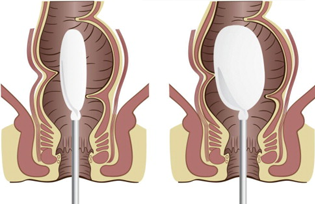All Departments
- Anorectal Manometry
- Diagnostics Endoscopy
- Endosonography
- Esophageal Manometry
- Gastroenterology
- Sonography
- Therapeutic Endoscopy
Emergency Cases
+91 9850 077 168
Anorectal Manometry
Anorectal manometry is a test used to measure and assess pressure, reflexes, and sensation in the rectum. The test also evaluates the efficiency of the anal sphincter. this Procedure is Effectively Done at Gastrohub Hospital The procedure will help your doctor evaluate the cause and determine the correct treatment for fecal incontinence or constipation.
Of all gastrointestinal complaints among older adults, constipation is the most common. 60% of elderly outpatients report frequent laxative use.
More About Anorectal Manometry
How does the Anorectal Manometry work?
A small tube (called a catheter) is inserted into the anus, passing a ring of muscles called the anal sphincter, before passing into the rectum. (See the illustration of the lower portion of the digestive system). A small balloon at the tip of the catheter is gradually inflated. This causes the nerves and muscles in the rectum and anus to begin to squeeze. The end of the tube remains outside the anus. It is connected to a machine that records the contractions and relaxations of the rectum and anal sphincter.
Before the test
- Do not eat or drink anything after midnight the night before the test.
- Your bowels need to be empty before your exam. You will need to give yourself a Fleet enema 2 to 3 hours before your appointment (You can purchase Fleet enemas at your local drug store or supermarket.)
- In most cases, this test will not interfere with any medications you may be taking. Ask your doctor if it is okay to take your prescribed medications the morning of the exam.
During the test
- You will not be sedated during the test.
- You will be asked to lie on your side.
- A small (about 1/4 inch in diameter), flexible tube is inserted slowly through your anal sphincter and into your rectum.
- You may feel some slight discomfort as the tube is being inserted, but should not feel any pain.
- After the tube is in place, the exposed end is attached to a machine that will record the pressure changes (muscle contractions and relaxation) in your rectum and anal sphincter.
- After the measurements have been taken, the tube is then slowly withdrawn. The gastroenterologist will interpret the recordings that were made during the test.
- The exam will take between 10 and 20 minutes to complete.
After the test
- Your physician will discuss the results of the manometry test with you.
- You will go home and may resume your normal diet and activities.
- If you think you may be experiencing any unusual symptoms or side effects, call your doctor.
What are treatment options?
Treatment depends on how severe the problem is and what’s causing it. Generally, treatment options include:
- Changes in diet
- Use of medications
- Muscle strengthening exercises
- Surgical repair

